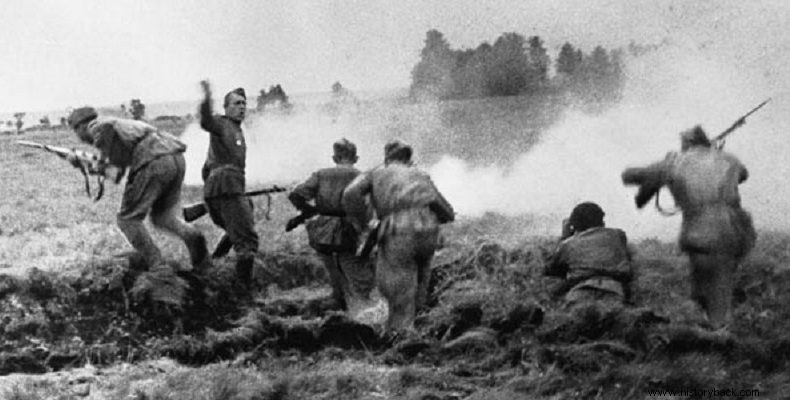
On June 22, 1944, the Soviets launched Operation Bagration, their largest offensive on the Eastern Front to date, with the aim of crushing the German forces in Belorussia.
By July 15, the Soviets had reached Grodno, in what is now western Belarus, on the border with Poland. The next day they occupied the city. The Soviets, certain that they had crushed the Germans, changed their course of attack after the capture of the city, leaving small forces in the area.
The Germans took advantage of the fact and counterattacked with a spearhead on the 3rd Waffen SS Division "Totenkopf" . The German division had 120 tanks and its objective was to eliminate the Soviet bridgehead on the Neman River.
The 455th Rifle Regiment (F) of the Soviet 42nd Rifle Division (MT) was deployed defensively in the area. 455 F had only two battalions. However, under the command of Major Sindorets, he fortified himself in an old, half-ruined fort from the tsarist period, known as Fort 1, and awaited the Germans.
The Germans attacked but the Soviets repulsed them. With the help of pioneers, the Germans managed to create openings in the walls of the fort. Determining the situation as hopeless, the Soviets did not hesitate to open fire with their artillery on the fort, killing their own men and Germans indiscriminately.
However, the fort could not be held and on July 19 most of the Soviets, along with Major Sidorets, evacuated it. At Fort 1 a company under Lieutenant Nikolai Podgursky remained as a rear guard to cover the retreat of the remaining men.
The position of these few was tragic. Ammunition was running out, their radio was destroyed and food was also lacking. But the Soviets continued the fight. They simply reduced their defensive perimeter.
"We poured gasoline on the fortifications and set them on fire. We hoped that the fire would force the Russians to surrender. But few surrendered, most continued to fight. As soon as we entered, their guns started firing , reported a German pioneer.
“We proceeded downstairs and launched some grenades. However, the Russians continued the fight. They were hard men. Through a prisoner we tried to persuade them to surrender. But they shot their captured colleague... The battle started again". , he said.
It took fierce fighting and casualties for the Germans to dominate. Eventually the surviving Soviets surrendered except for 10. Eight managed to escape. The head of the rear guard lieutenant Nikolai Podgursky together with his equal Andrei Shipeyev refused to surrender. The two Soviet officers each wrote a note and committed suicide.
Podgusrki wrote:“Comrades. You will find us dead. Learn how we died with honor as befits Red soldiers who protected the honor and independence of the homeland. Death to the German invaders. Take revenge for us. Lieutenant Podgusrki". .
Sipeyev wrote:“Men from Soria (southern Siberia) are not surrendered alive. Tell everyone that we fought and died as officers".
Of the rearguard company 30 men were wounded and 40 killed and only 8 survived. A simple monument reminds of their sacrifice.

